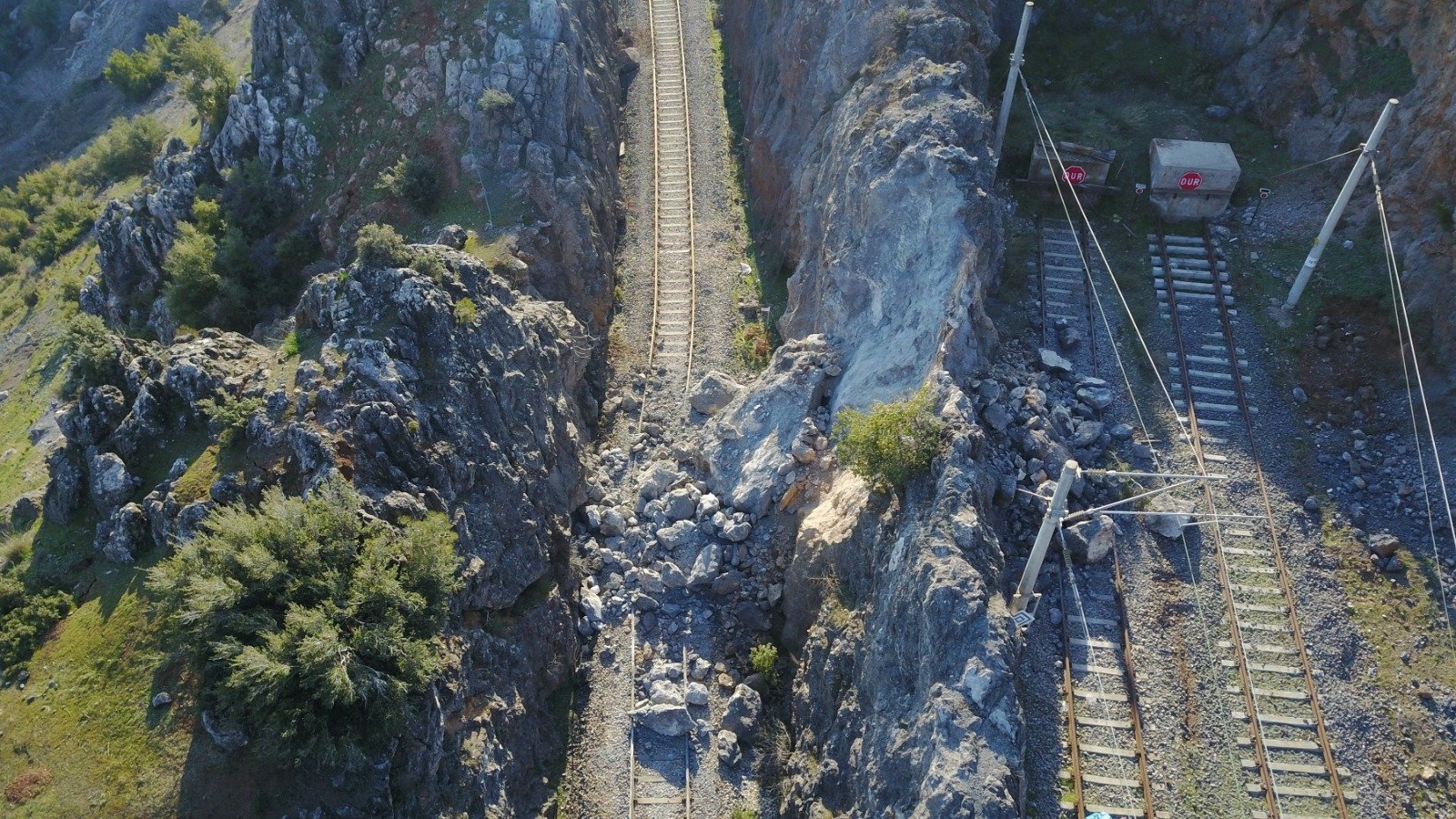© Turkuvaz Haberleşme ve Yayıncılık 2026
Slips and displacements caused by fault breaks on roads, garden walls, fields and railways after the Feb. 6 earthquakes were detected after field investigations by teams of the General Directorate of Mineral Research and Exploration (MTA) in the southeastern region, and were displayed to the public on Monday through photographic documentation.
MTA expert teams conducted an on-site investigation of last week's earthquakes in quake-hit areas and published evaluations on the directorate's website.
According to their findings and examinations, it was observed that cracks and fractures expanding to 2.5 meters (8.2 feet) were formed on roads and fields in several locations of Hatay and Gaziantep provinces.
In the Kırıkhan district of Hatay, it was observed that a part of the road passing through the district center had slightly shifted to the left due to the earthquake and deep cracks were formed on the road. A displacement of 2.5 meters was detected along the fracture formed on the surface at the village road, and the median between Kırıkhan and Hassa.
The MTA also determined that olive trees were displaced by 3.3 meters due to the fault rupture detected in the south of Hassa.
Likewise, a displacement of 3.1 meters was detected on the road in the center of Hassa and on Hürriyet Street due to the fault rupture.
A displacement of 3.2 meters on the asphalt road to the north of Hassa, 2.75 meters on the garden wall between Hassa and Islahiye, and 3.5 meters on the garden fence and road in the same area were detected.
In the south of Islahiye, a displacement of 3.7 meters was detected in the road and water canal, 4.5 meters in the stone wall, and 38 centimeters (14.96 inches) in the garden wall and road.
During field investigations by teams in Gaziantep's Nurdağı district, several slips were found on the surface due to strong fault ruptures.
A road displacement measuring some 2.5 meters to the left was recorded, while another road in the district center moved by 2.8 meters according to MTA findings.
In the south of the Türkoğlu district in Kahramanmaraş, road shifts measuring 3.7 meters and 3.2 meters to the left were determined. A 2.7-meter shift to the left was detected on the Narlı railway line as well, shared MTA sources.
The ruptures on roads, highways and fields were reported after the earthquake hit several locations inflicting damage that was visibly evident.
A 300-meter-long, 50-meter-wide and 40-meter-deep valley was formed in an olive grove in the Altınözü district of Hatay province, leaving residents of the neighborhood in a state of shock over the last weekend.
A local, Irfan Aksu, stated that the caved-in zone of the olive grove is probably more than 100 acres. Recounting their earthquake experience, Aksu said that there was an ''incredible sound'' as the grove was ripped off. He said he had never experienced an earthquake of such magnitude.
''There was no such earthquake, there were tremors, but we never saw an earthquake like this. Our fathers used to tell us that Hatay was razed to the ground before. Our grandfathers did not witness it, but they narrated it,'' Aksu said.
"Experts need to come and explore. If necessary, the neighborhood should be moved," he added.
After the immense effect of the earthquake, it was also reported that six trains parked at the train maintenance station in Gaziantep were derailed as powerful earthquakes shook southeastern Türkiye last week.

At the same time, rocks from the mountainside rolled over onto train tracks near Fevzipaşa Train Station, rendering the route unusable for trains. Derailed trains and falling rocks from the mountain onto the rails revealed the scale of horror unleashed by the earthquakes.
While there were no deaths or injuries, the lifting work of the teams on the railway continued till Monday evening. State Railways (TCDD) emergency teams were working on removing the overturned trains and lifting fixed wagons.
